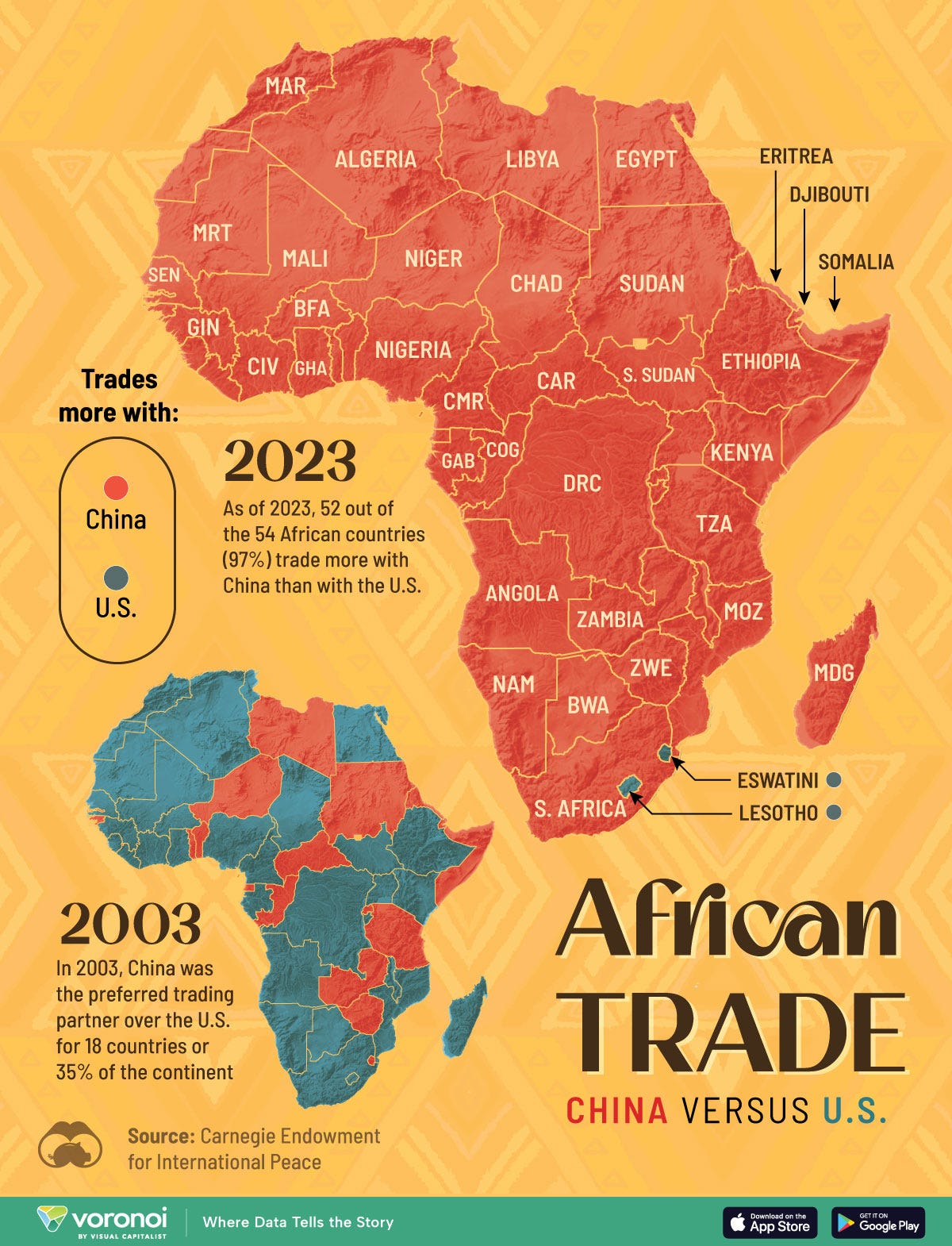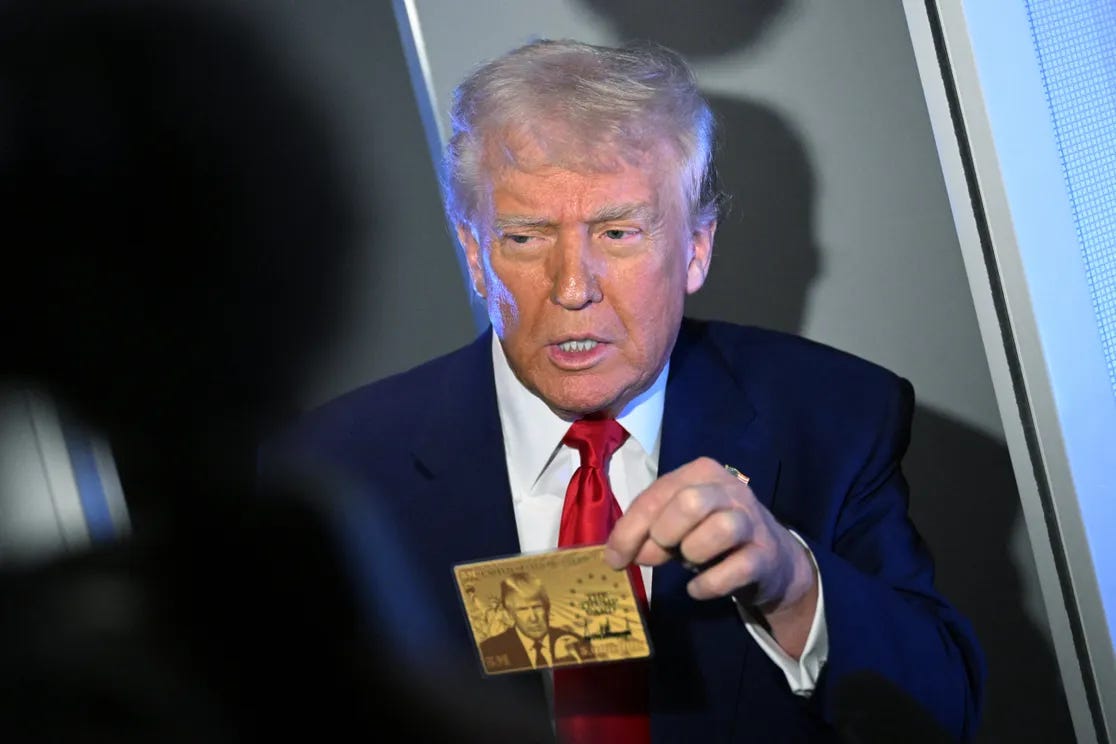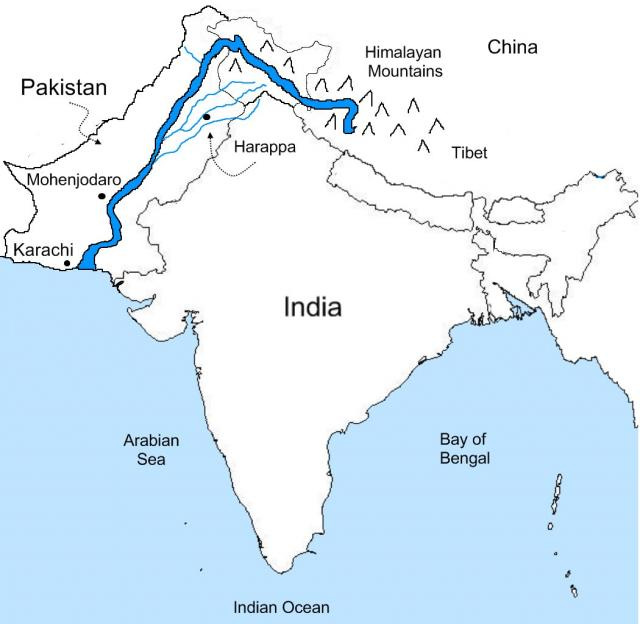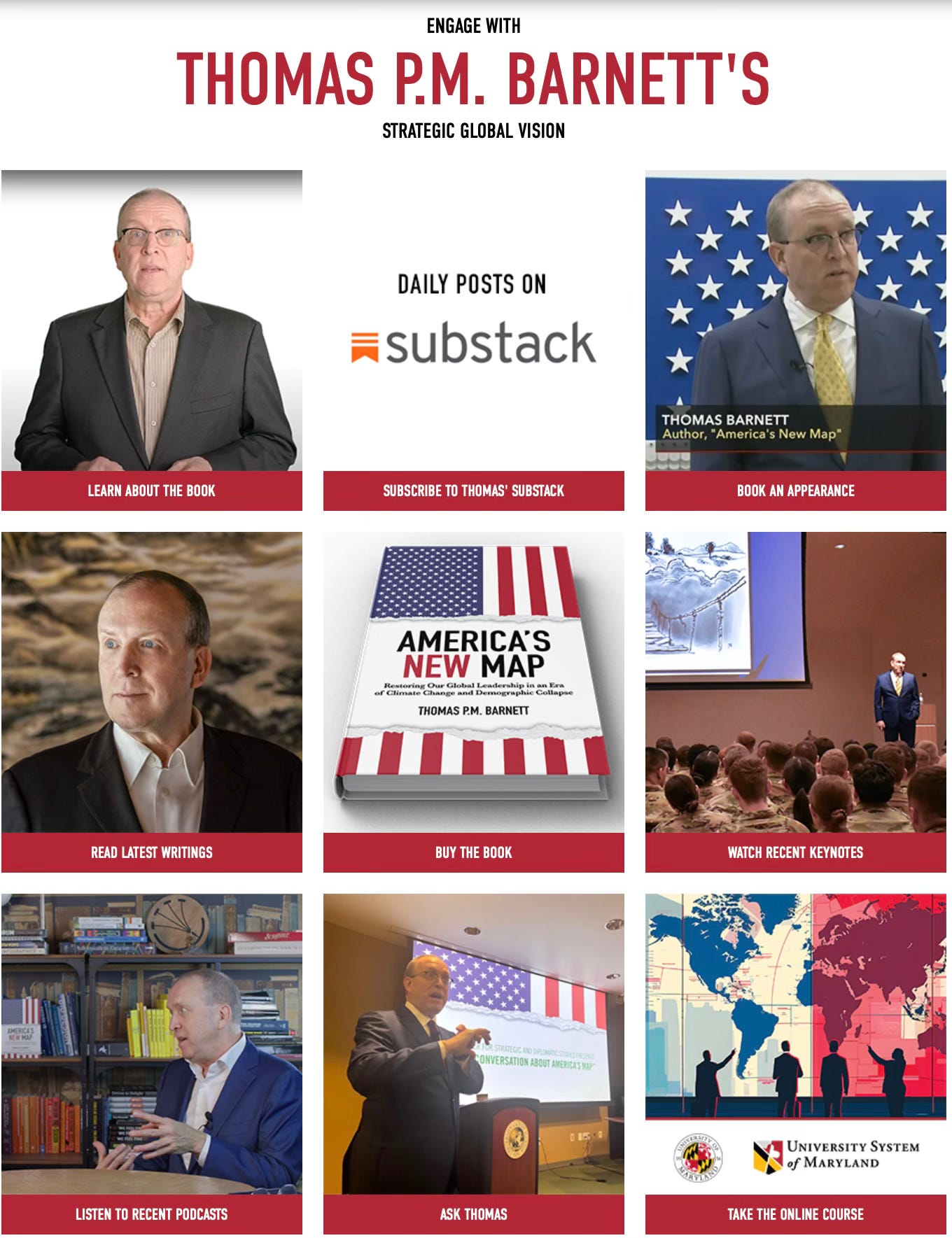This is a reader-supported publication. I give it all away for free but could really use your support if you want me to keep doing this.
1) The unpopular American
ECONOMIST: American brands have a new image problem
American brands are seeing their appeal plummet across the planet — yet another amazing indication of what one leader can accomplish in a matter of weeks. Canada and Denmark have emerged as two epicenters of anti-Americanism — a stunning accomplishment all its own (like Minnesota suddenly vaulting to the top of the list of “Rudest states in America”).
ABUSA is the new acronym, standing for Anywhere But U.S.A.
Who wins by default? You know who.
It must be amazing to be in a competition where all you need do to keep winning is … nothing, actually. Nothing other than hoping your opponent keeps flapping his gums.
None of this is good news for a country that claims $8T in exports every year.
The firms and the products most damaged in this brand suicide: “technology companies, carmakers and food-and-beverage firms.”
The Economist’s dim view:
Many American firms will have to grapple with the fact that their nationality may no longer be an asset—but a liability.
Such, it seems, it the price of renewed “greatness.”
2) Land of the giants
NYT: U.K. Trade Deals Bare the Reality: It’s a Midsize Economy Among Giants
I cannot resist the storyline comparison with this Irwin Allen classic from the late 1960s):
Set in 1983 (at that time, 15 years in the future), the series concerns the passenger aircraft Spindrift, which is lost during a suborbital spaceflight from Los Angeles to London. Just beyond Earth's boundary with space, the ship is dragged through a "dimension lock" and crashes on a planet which is similar to Earth, except that everything is twelve times larger in size. The shipwreck is hidden in the woods outside of a city, inhabited by a humanoid race which the Earthlings refer to as "Giants".
Don’t laugh, the early 1980s were a weird time …
Anyway, substitute BREXIT vote for the sub-orbital flight and the story is pretty much the same: when you leave the world’s second biggest market to strike out on your own, the world suddenly seems many times larger.
Striking back-to-back deals with the European Union and the United States, Britain showed that it didn’t have to choose between its two largest, mutually antagonistic trade partners, after all. It could, as its ambassador to Washington, Peter Mandelson, once said, “have our cake and eat it.”
But the limited scope and occasionally stingy terms of these deals, both of which required painful concessions, attest to Britain’s diminished position in the post-Brexit era. Far from being an agile free agent that is able to strike opportunistic deals, as Brexiteers once predicted, Britain finds itself squeezed between dueling heavyweights.
“If it is a cake,” said Mujtaba Rahman, an analyst at the political risk consultancy Eurasia Group, “it isn’t a very tasty one.”
The reality for Britain (and the trigger of my pop culture deep cut):
Such trade-offs reflect Britain’s sobering reality as a midsize economy operating in a world of three gargantuan trading blocs: the United States, the European Union and China.
Britain is free alright: free to accept lesser deals from just about everybody.
America risks following them right down the drain with Trump’s tariff war against all.
You’ll say, no, it can never happen to us because our market is so big!
But Trump’s “big, beautiful bill” is already spooking the US Treasury bond market, and if it passes in its current form (questionable, then — again — it could be made worse), it could trigger a full-blown crisis that makes all borrowing in America that much more expensive — a dangerous development for an economy with a depressed housing market.
To note: since BREXIT, the British pound has consistently traded at lower levels, with nobody expecting it to regain its past strength any time soon.
3) Out of Africa
VISUAL CAPITALIST: U.S. vs. China: Mapping Trade Dominance in Africa (2003-2023)
Just 22 years ago, America had more trade than China with most African nations. Today, China outpaces us in every single state — save the old British protectorates (within South Africa) of Lesotho and Eswatini (formerly Swaziland) — two countries, dare I say, nobody has ever heard of.
Come 2050, one out of every four consumers in our world will live in Africa and half of those will be 18 years or younger.
America spots dangers; China spots demand.
Just imagine what capturing that brand loyalty could be worth over the rest of the century.
Because I’m telling you that China has already run those numbers.
Will America compete here? Expect it to rank below the EU, the Saudis and PG monarchies, and — of course — India and China, meaning there will be many versions of this map in the future.
4) Speak of the devil …
NYT: U.A.E. Is Pouring Money Into Africa, Seeking Resources and Power
A chart from the second of my Massive Open Online Courses (Navigating Global Markets Amidst Superpower Brand Wars — New Rulesets for Global Business) available at edX and Coursera:
In the Middle East and North Africa, UAE is the #1 FDI supplier in more countries than anybody else. UAE leads in Egypt, Algeria, Iraq, Jordan, Kuwait, Lebanon, and Oman. America is #2, being the top source for Israel, Qatar, KSA and UAE itself.
In Sub-Saharan Africa, UAE is #1 in Mauritania, Senegal, Seychelles, Somalia, and South Africa. That ties UAE with China at five #1’s, and puts them way beyond America’s measly two. France leads all nations with six, befitting its former colonial status.
Point is, UAE is a serious FDI supplier and thus a serious shaper of the future across the Middle East and Africa.
5) CRINK? More like CRINge
NYT: Kim Jong-un Vents Fury After Botched Launch of North Korean Destroyer
National security experts are constantly feeding us this nonsense that China, Russia, Iran and North Korea (CRINK) all combine to pose this mega-military threat to the US — like we’re going to go to war with all of them simultaneously in some fabulous mini-World War scenario.
It’s complete nonsense.
China is formidable but only in East Asia, Russia is bleeding out in Ukraine, Iran is just praying Israel won’t attack, and North Korea? North Korea can’t even figure out how to successfully launch a new naval warship — basically breaking one in half.
Kim, we are told, “vows to punish as criminals those responsible for the failure, in which the ship had its hull torn open and ended up on its side in the water.”
If that doesn’t justify a $1T US defense budget, then I don’t know what does.
6) Another bizarro Oval Office set-up
NYT: Trump Lectures South African President in Televised Oval Office Confrontation
The set-up this time (see, Zelensky) was less to force a confrontation and more about Trump publicly signaling to his domestic alt-Right supporters that he stands up for “persecuted” Whites the world over — this after fast-tracking those Afrikaner “refugees” last week.
Trump makes the president of South Africa sit through some QAnon-quality video allegedly proving White “genocide” there, when there simply is no credible evidence that rural White farmers in South Africa are experiencing mass violence — much less being wiped out in some genocide. We’re talking less than 1% (0.2%) of murders in the country involving rural farmers (36 in total for the majority of 2024), with only seven (!) of those being White farmers.
Seven Afrikaner farmers does not a genocide make.
Thus, a truly performative work of art and sheer lying at its best.
Also shows what $288M in campaign contributions gets you:
“Elon is from South Africa,” Mr. Trump said, waving at the billionaire Elon Musk, who was standing nearby, close to Stephen Miller, Mr. Trump’s deputy chief of staff.
Mr. Musk has been among the most vocal critics of the South African government, and has lashed out at Mr. Ramaphosa on social media.
“Elon happens to be from South Africa,” Mr. Trump said. “This is what Elon wanted.”
Well, well, money talks.
7) We have been warned
ECONOMIST: The Senate should vote down Donald Trump’s reckless tax cuts; If it does not, a collision with the bond markets awaits
The Economist is the closest thing to objective, God’s truth on economics.
The warning here is stark:
Complacent about being the world’s haven, America has been budgeting without any sense of restraint. Over the past year the federal government has borrowed a staggering $2trn, or 6.9% of gdp, even though no crisis has drained its coffers. On May 16th Moody’s, a rating agency, stripped the country of its last headline triple-A credit score. Yet on May 22nd the House of Representatives passed, by just one vote, President Donald Trump’s “big, beautiful” budget bill, which cuts taxes and raises deficits. Reflecting the rising fiscal risk, the yield on 30-year Treasuries has risen to 5.1%, the highest since 2007, amid a sell-off
America has more fiscal leeway than other countries, but the Republican Party seems determined to test its limits. Net federal debts have grown to 100% of gdp, a near-trebling over two decades, meaning that the Treasury will soon pay more than $1trn per year in debt interest, almost as much as it spends on health care for the old. Politicians who should be debating how to tighten their belts are instead poised to raise borrowing still further. Unless they think again, they risk stoking a crisis.
That crisis will appear first in the bond market, or where the US Treasury floats public debt. Needing to offer higher yields to move that debt, our linked housing market will suffer next. It will not be pretty.
8) The color of money
AXIOS: Exclusive: Trump's "gold card" launch
If you’re a non-White migrant, be prepared to be renditioned to some failed state suffering a civil war.
If you’re a White immigrant, be prepared to get a hero’s welcome for escaping South Africa.
And, if you bleed green (to the tune of $5M per person), step right up to the front of the line.
Trump promises to retire the national debt on this basis alone.
Crazy?
It would take 7,240,000 immigrants each shelling out the $5M to retire our present $36T debt.
Sounds easy enough.
Reality?
The global pool of non-U.S. individuals who could realistically pay $5 million for immigration is likely in the low millions at most — as in, 1-3M.
Still, if Trump could talk 3M into coming, that’d be half the US debt.
Then I remember Trump’s historical record on such predictions …
Sigh!
It is fiscally dangerous to listen to that man.
9) NEVER get involved in a land war in Asia
RESPONSIBLE STATECRAFT: Hegseth is taking the Army on another dead end ride to Asia
The notion that the future of the US Army can be found in a land war with China in Asia … hmmm.
If you really want to go to war with China, then you shrink the US Army and take those savings and apply them to the Navy and Air Force. As for the Marines, they’ve been pursuing this bet for a while now, and probably no more money should be wasted on tilting at that windmill — i.e., those Marine Littoral Regiments that are definitely going to shine in the “drone hellscape” that Indo-Pacom has planned for China’s military.
The harsh truth is this: in a post-human battlespace, the need for Army and Marines diminishes greatly — unless you plan on sticking around for the nation-rebuilding or are willing to work the counter-insurgency, and America is just no longer into that scenario — one that may well be historically retired by the looming Military Singularity.
The Marines are used to such institutional paranoia; the Army … not so much — hence the grasping-at-straws vibe concerning this latest Transformation Initiative.
10) The zone, discounting the flood
HERALD PLUS: Donald Trump is a paper tiger, all bark and no bite; Donald Trump’s empty threats are piling up and the pattern of behaviour is becoming all too clear for America’s biggest rivals and enemies.
It is a long list of countries and groups that have been threatened with very dire circumstances. Problem is, in virtually every instance, Trump has already backed down without winning anything of significant value.
So, the counter-strategy is rather obvious: simply wait and dare Trump to follow through on his threat.
Does it work for everyone? It sure hasn’t worked for Harvard — yet, but that’s a situation where POTUS can unilaterally and almost unidirectionally disrupt. The same isn’t really true in bilateral state-to-state relationships where mutual interests suffer damage in the meantime.
So, true to bully logic: Trump’s threats work best when they carry close-to-zero potential blowback for him or the US economy. Harvard falls into that category, for now, as the damage there is more long-term in coming, while taking on the Ivy League appeals to the MAGA base.
11) The room in the rear must remain near
THE TELEGRAPH: Today, only Ukraine and Russia are ready for land war. We must change that
The Star Wars reference was a given, given the subtitle of “We used to train the Ukrainians, but they are the teachers now”!
So, the argument starts off sounding like a call for a new and better soldier in the battlespace — you know, boots on the ground.
But then you read further and you realize that the boots can still be dangling off that lawn chair or recliner:
What is key today is the electromagnetic spectrum – he who controls this, controls the battle space. This means that fighting is not now about men and women being robust and able to shoot straight: there is an increasing role for the gamer and the hacker to affect the outcome of the battle from a “room in-the-rear”. Most of the soldiers killed in today’s war are killed by drones, potentially operated by someone far off: most of the drones, however, are relatively short ranging, meaning that the drone which kills a soldier probably took off from somewhere not that far away. There is thus still a need for tough, brave troops able to operate close to the enemy lines.
Ender can only be so far from the battlefield, it would seem.
12) The “water bomb” India just dropped on Pakistan
TIMES OF INDIA: ‘A water bomb’: Pakistan Senator Syed Ali Zafar explains impact of India suspending Indus pact
India can threaten Pakistan’s water supply. It recently suspended its participation in the Indus Water Treaty that delineates how drinking water is shared between the two nations in their shared river basin. It hasn’t exactly cut off the flow, but it is signaling — by its technical non-compliance with the treaty’s requirements — that it is capable and willing to do so.
This threat is part of India’s ongoing response to the slaying of 26 Indian tourists in Kashmir by a Pakistan-based terror group.
Why such threats matter is the point of the citation here:
Three-fourths of our water comes from outside the country. Out of every ten people, nine are living their lives based on international border basins," Zafar said.
As I noted in America’s New Map, climate change is altering the nature of the water cycle all over the globe:
All such changes to how fresh water moves around our planet means the long-standing geopolitics of oil are being replaced with local, national, international, and global hydropolitics. While negotiations concerning water use have long been practiced as a near art form in America’s Southwest (consider, for example, arbitration over states’ rights regarding the completely consumed Colorado River), the world witnesses growing political struggles concerning upstream dams and downstream agriculture across a host of historic—and mostly Asian—river basins. These situations will prove particularly difficult for national governments to collaboratively manage, inevitably leading to charges of “hydro-hegemony.”
Upstream control of water is a key leverage point in India’s relationship with Pakistan — and part and parcel of their enduring fight over who controls the disputed borderlands of Jammu and Kashmir.
The same holds true for China and its relationships with SE Asian nations (there, the key river basin is that of the Mekong).
Expect to hear more about such tensions in the years ahead. They are real and they are growing and climate change simply raises the stakes for all involved.






















